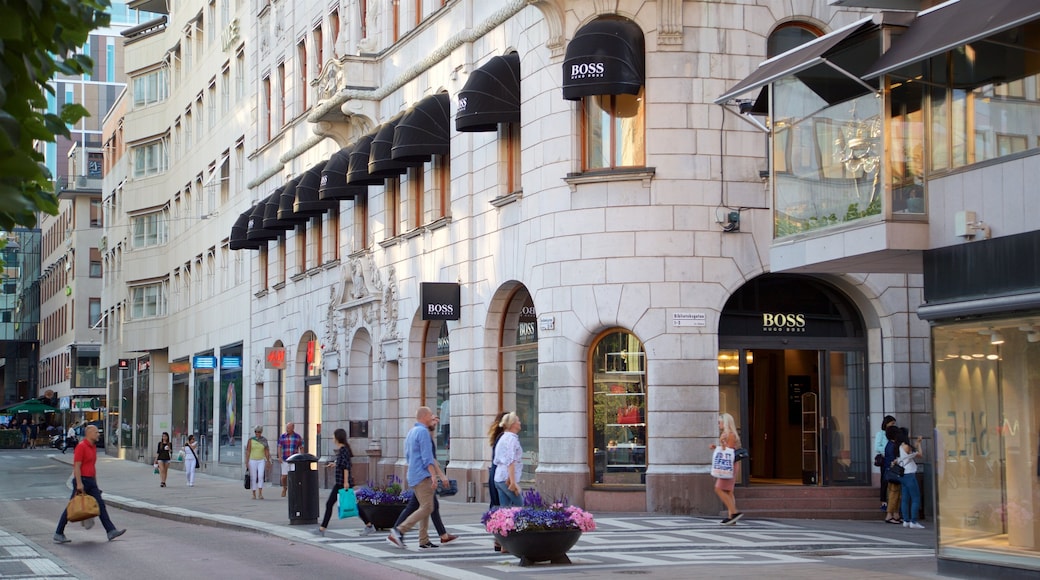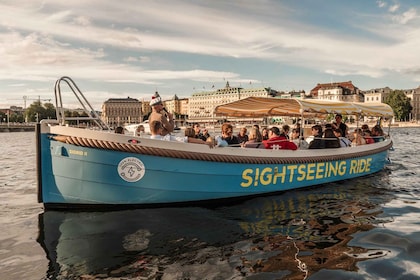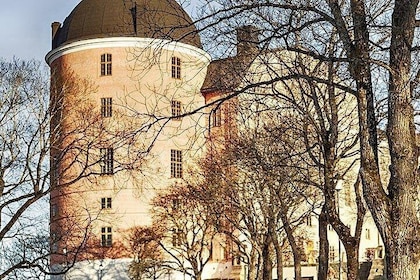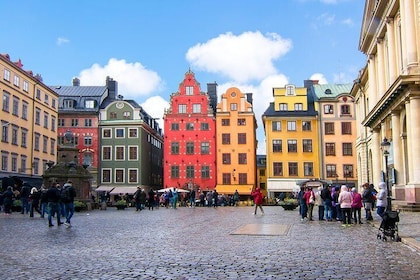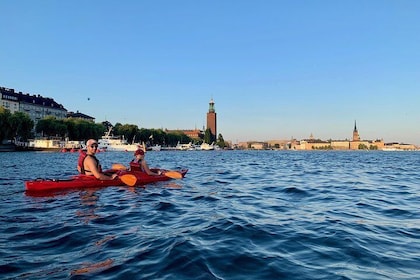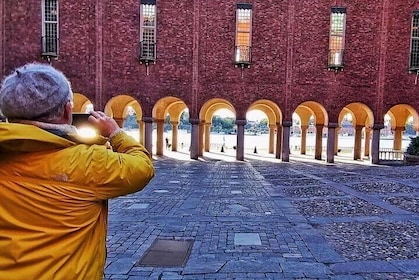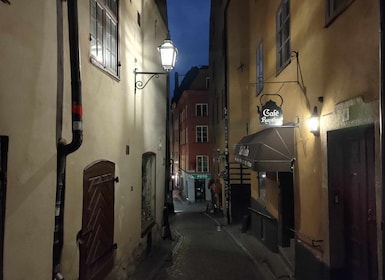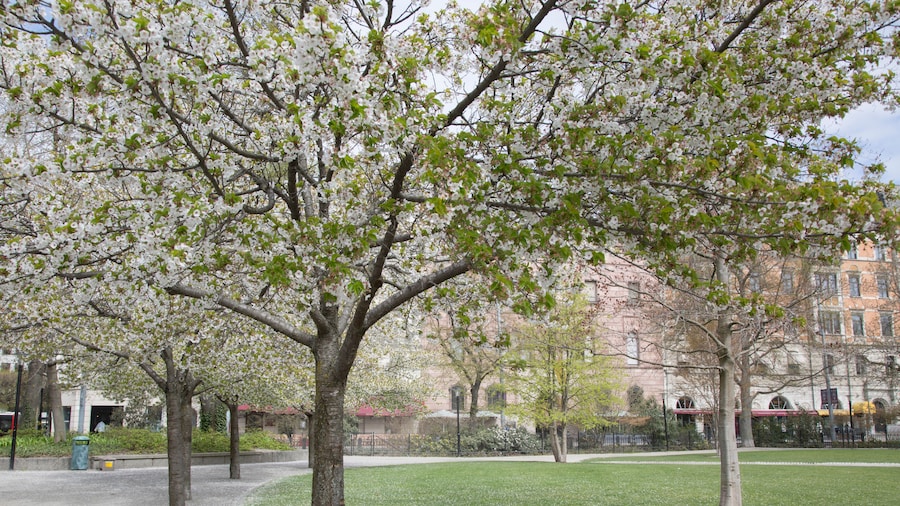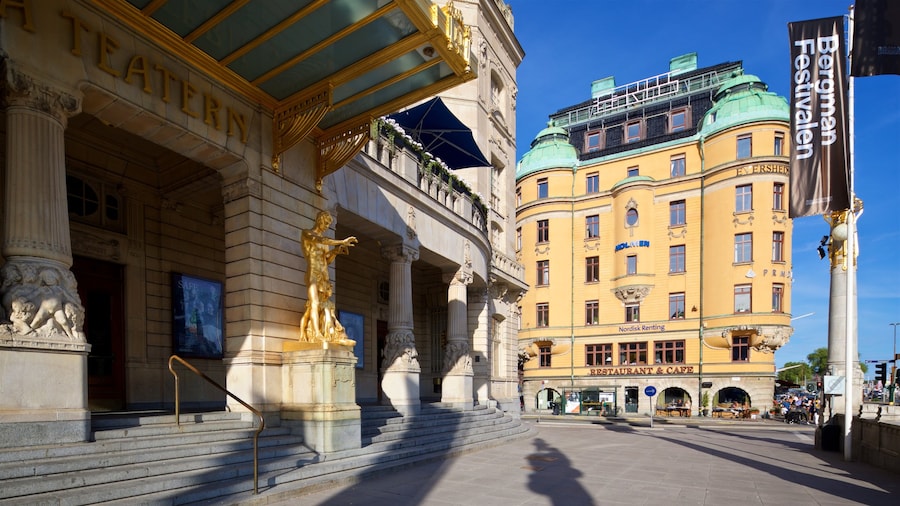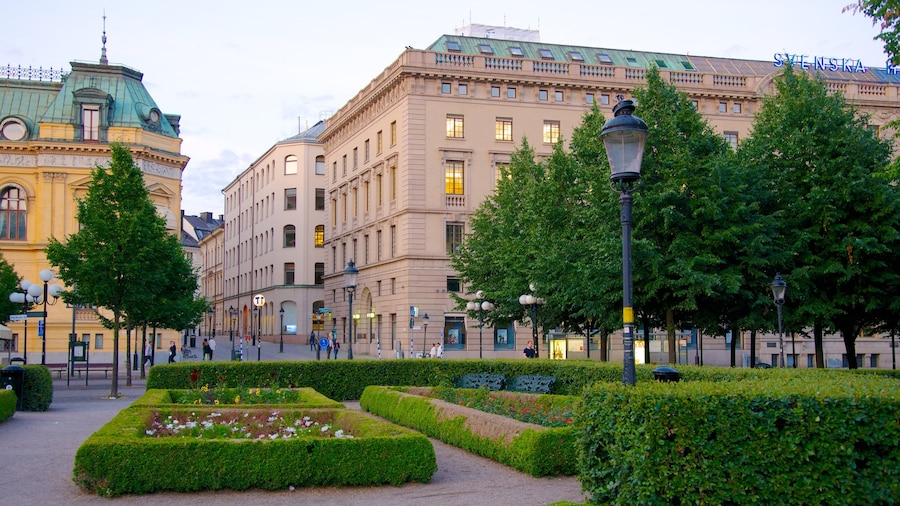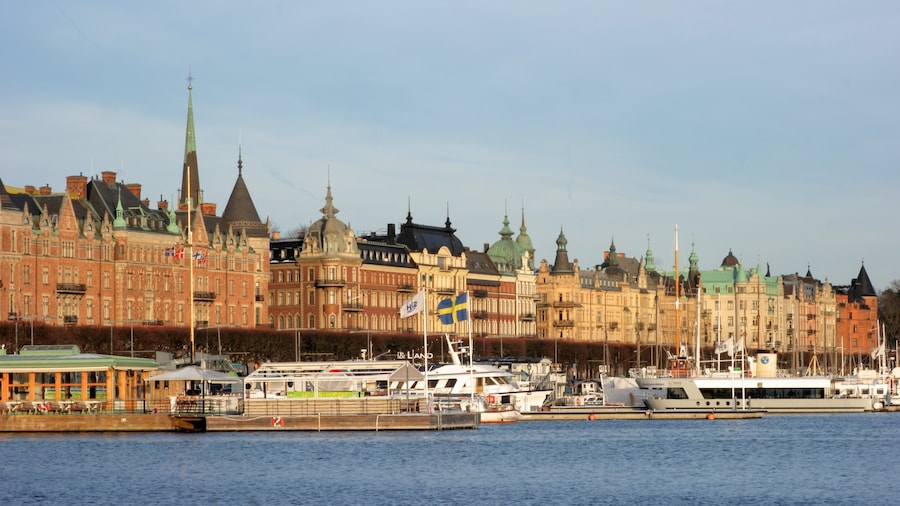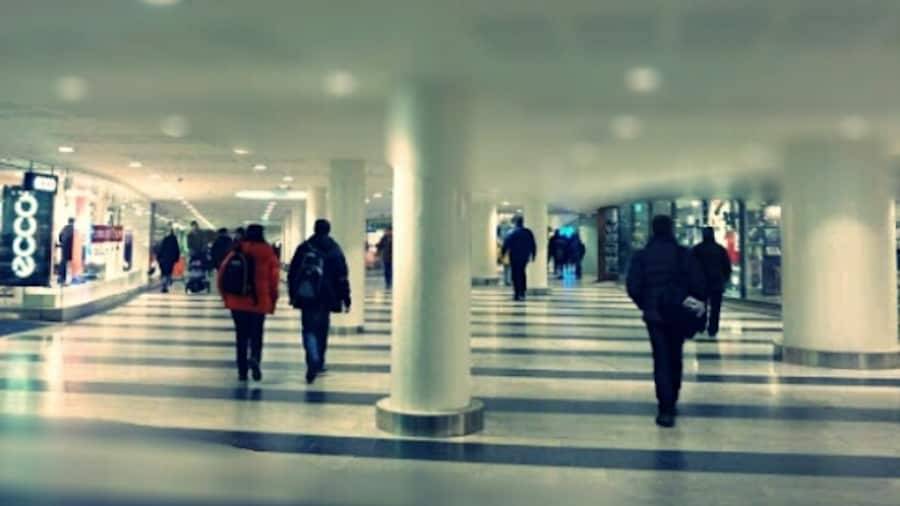Marvel at some of the city’s most resplendent architecture in the plaza where bank heist hostages famously sympathized with their captors.
As the place where Stockholm Syndrome was named, Norrmalms Square has a fascinating history to complement its majestic architecture. The spacious plaza is filled with cafés and stores, standing at the meeting point of some of the city’s most popular commercial avenues. Enjoy a meal at one of the restaurants with seats and umbrellas set up in the plaza. Do some people-watching for a sense of the local culture.
Admire the gorgeous red façade of the Norrmalmstorg 4 building, with its many arched windows and off-white features. Notice its gabled roof and charming turrets. Another highlight is the front of the Swedish Life Insurance Company building, with its elegant clock face and intricate balconies.
The western side of the plaza is occupied by the City Palace, which dates back to the early 1930s. Appreciate the blend of glass and marble in this impressive structure, which now hosts several large companies.
Forever entwined with the extraordinary history of this square is the Former Kreditbanken Branch, where a 1973 robbery made world headlines. The bank heist involved a 5-day hostage situation during which those being held captive bonded with their guards, resulting in the coining of the term Stockholm Syndrome.
Study the intriguing clock in the center of this former bank’s façade. The elegant timepiece shows the date and day of the week as well as the time. Opposite the old bank, stand beside the kiosk where police were camped during the robbery.
Rent bikes from the City Bikes station and make your way around the city center. Note that you’ll hear the plaza referred to by locals as the Norrmalmstorg.
Norrmalms Square is a little inland from the Nybroviken waterway in the center of Stockholm. Ride a bus or the tram to the stops in the center of the plaza. You can also walk here in a few minutes from the Nybrokajen ferry terminal.
While you’re in this part of the city, visit some of the adjacent highlights, such as the Hallwyl Museum, the China Teatern and St. Jacob’s Church.
